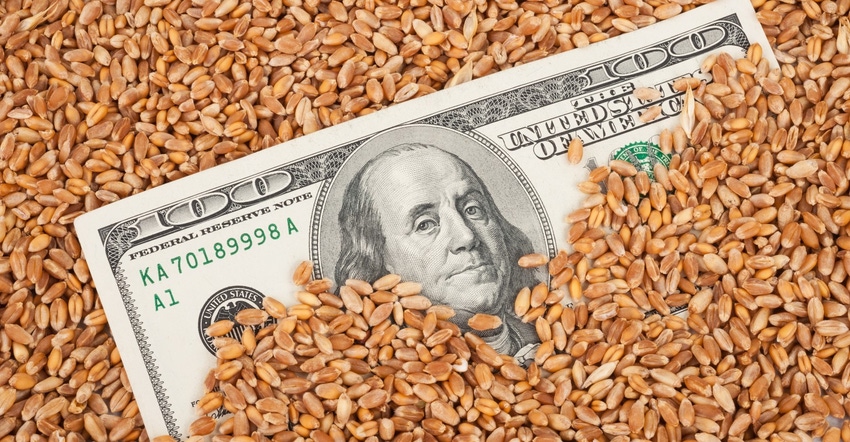Pandemic Assistance for Producers initiative refines CFAP and redirects farm payments to more diverse set of ag producers.

Following up on his promise to reevaluate the Coronavirus Food Assistance Program and identify gaps in funding, Secretary of Agriculture Tom Vilsack announced Wednesday that USDA plans to distribute additional financial assistance to those who felt the impact of COVID-19 market disruptions. USDA says the new initiative—USDA Pandemic Assistance for Producers—will reach a broader set of producers than in previous COVID-19 aid programs. USDA is dedicating at least $6 billion toward the new programs, and also plans to begin the distribution of $4.5 billion for crop producers and $1.1 billion for cattle producers.
The Department will also develop rules for new programs that will put a greater emphasis on outreach to small and socially disadvantaged producers, specialty crop and organic producers, timber harvesters, as well as provide support for the food supply chain and producers of renewable fuel, among others.
Existing programs such as CFAP will fall within the new initiative and where statutory authority allows, will be refined to better address the needs of producers, the agency says. USDA will reopen sign-up for CFAP 2 for at least 60 days beginning on April 5, 2021. Upon President Joe Biden entering office, CFAP was part of a regulatory freeze and halted payments going out to farmers.
Related: Vilsack promises timely review of CFAP
USDA Pandemic Assistance for Producers was needed, says Vilsack, after a review of previous COVID-19 assistance programs targeting farmers identified a number of gaps and disparities in how assistance was distributed as well as inadequate outreach to underserved producers and smaller and medium operations.
“The pandemic affected all of agriculture, but many farmers did not benefit from previous rounds of pandemic-related assistance. The Biden-Harris Administration is committed to helping as many producers as possible, as equitably as possible,” says Vilsack. “Our new USDA Pandemic Assistance for Producers initiative will help get financial assistance to a broader set of producers, including to socially disadvantaged communities, small and medium sized producers, and farmers and producers of less traditional crops.”
CFAP future
USDA will re-open sign-up for of CFAP 2 for at least 60 days beginning on April 5, 2021.
FSA has committed at least $2.5 million to establish partnerships and direct outreach efforts intended to improve outreach for CFAP 2 and will cooperate with grassroots organizations with strong connections to socially disadvantaged communities to ensure they are informed and aware of the application process.
The Consolidated Appropriations Act, 2021, enacted December 2020 requires FSA to make certain payments to producers according to a mandated formula. USDA is now expediting these provisions because there is no discretion involved in interpreting such directives, they are self-enacting.
An increase in CFAP 1 payment rates for cattle. Cattle producers with approved CFAP 1 applications will automatically receive these payments beginning in April. Information on the additional payment rates for cattle can be found on farmers.gov/cfap. Eligible producers do not need to submit new applications, since payments are based on previously approved CFAP 1 applications. USDA estimates additional payments of more than $1.1 billion to more than 410,000 producers, according to the mandated formula.
Additional CFAP assistance of $20 per acre for producers of eligible crops identified as CFAP 2 flat-rate or price-trigger crops beginning in April. This includes alfalfa, corn, cotton, hemp, peanuts, rice, sorghum, soybeans, sugar beets and wheat, among other crops. FSA will automatically issue payments to eligible price trigger and flat-rate crop producers based on the eligible acres included on their CFAP 2 applications. Eligible producers do not need to submit a new CFAP 2 application. For a list of all eligible row-crops, visit farmers.gov/cfap. USDA estimates additional payments of more than $4.5 billion to more than 560,000 producers, according to the mandated formula.
Utilizing $6 billion in unspent funds
Over the past year, Congress authorized more than $72 million of assistance for USDA to distribute for hungry families, distressed producers and shattered communities. However, USDA has obligated roughly 60% of the funds provided. USDA will dedicate at least $6 billion to develop a number of new programs or modify existing proposals using discretionary funding from the Consolidated Appropriations Act and other coronavirus funding that went unspent by the previous administration.
Where rulemaking is required, that process will commence this spring.
These efforts include assistance for dairy farmers through the Dairy Donation Program or other means; euthanized livestock and poultry and other possible expansion and corrections to CFAP that were not part of today’s announcement such as to support dairy or other livestock producers. The agency also looks to improve the resilience of the food supply chain, including assistance to meat and poultry operations to facilitate interstate shipment.
This pot of money will also offer money for the biofuels industry, USDA says.
In an effort to broaden its inclusion of help to more producers, USDA also plans to aid specialty crop producers, beginning farmers, local, urban and organic farms; costs for organic certification or to continue or add conservation activities; and timber harvesting and hauling.
USDA also plants to help fund the purchase of Personal Protective Equipment (PPE) and other protective measures for food and farm workers and specialty crop and seafood producers, processors and distributors; developing infrastructure to support donation and distribution of perishable commodities, including food donation and distribution through farm-to-school, restaurants or other community organizations; and reducing food waste.
New funding to existing programs
USDA expects to begin investing approximately $500 million in expedited assistance through several existing programs this spring, with most by April 30. This new assistance includes:
$100 million in additional funding for the Specialty Crop Block Grant Program, administered by the Agricultural Marketing Service, which enhances the competitiveness of fruits, vegetables, tree nuts, dried fruits, horticulture, and nursery crops.
$75 million in additional funding for the Farmers Opportunities Training and Outreach program, administered by the National Institute of Food and Agriculture and the Office of Partnerships and Public Engagement, which encourages and assists socially disadvantaged, veteran, and beginning farmers and ranchers in the ownership and operation of farms and ranches.
$100 million in additional funding for the Local Agricultural Marketing Program, administered by the AMS and Rural Development, which supports the development, coordination and expansion of direct producer-to-consumer marketing, local and regional food markets and enterprises and value-added agricultural products.
$75 million in additional funding for the Gus Schumacher Nutrition Incentive Program, administered by the NIFA, which provides funding opportunities to conduct and evaluate projects providing incentives to increase the purchase of fruits and vegetables by low-income consumers
$20 million for the Animal and Plant Health Inspection Service to improve and maintain animal disease prevention and response capacity, including the National Animal Health Laboratory Network.
$20 million for the Agricultural Research Service to work collaboratively with Texas A&M on the critical intersection between responsive agriculture, food production, and human nutrition and health.
$28 million for NIFA to provide grants to state departments of agriculture to expand or sustain existing farm stress assistance programs.
Approximately $80 million in additional payments to domestic users of upland and extra-long staple cotton based on a formula set in the Consolidated Appropriations Act, 2021 that USDA plans to deliver through the Economic Adjustment Assistance for Textile Mills program.
About the Author(s)
You May Also Like


.png?width=300&auto=webp&quality=80&disable=upscale)
.png?width=300&auto=webp&quality=80&disable=upscale)

